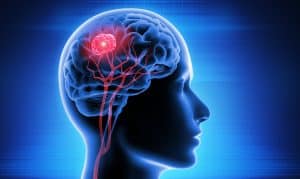Exercise - From Prevention to Survivorship
 According to a 2016 study conducted by Moore et al., leisure-time physical activity reduces the risk of at least 13 different cancer types (Moore et al., 2016), and furthermore provide evidence for an exercise-dependent reduction in the risk of disease recurrence for breast, colon, and prostate cancer. There are over 100 published exercise intervention studies in cancer patients that further confirm that exercise is associated with positive changes in cardiopulmonary fitness, physical function, physical capacity, and body composition, as well as less cancer-related fatigue, improved sleep quality, and an overall sense of empowerment.
According to a 2016 study conducted by Moore et al., leisure-time physical activity reduces the risk of at least 13 different cancer types (Moore et al., 2016), and furthermore provide evidence for an exercise-dependent reduction in the risk of disease recurrence for breast, colon, and prostate cancer. There are over 100 published exercise intervention studies in cancer patients that further confirm that exercise is associated with positive changes in cardiopulmonary fitness, physical function, physical capacity, and body composition, as well as less cancer-related fatigue, improved sleep quality, and an overall sense of empowerment.
 More evidence is emerging that exercise training (1) controls cancer growth rate, metastasis, tumor metabolism, and immunogenicity of the tumor, (2) regulates tumor (3) minimizes adverse treatment-related side-effects, and (4) improves cancer treatment outcome. Across many preclinical studies investigating the effect of exercise on cancer outcomes, the most common outcome is a reduction in the rate of tumor growth (Ashcraft et al., 2016; Pedersen et al., 2015). The control of tumor growth by exercise training in established tumors may be as high as a 67% reduction in growth rate (Pedersen et al., 2016), but exercise in itself is not capable of directly eradicating tumors.
More evidence is emerging that exercise training (1) controls cancer growth rate, metastasis, tumor metabolism, and immunogenicity of the tumor, (2) regulates tumor (3) minimizes adverse treatment-related side-effects, and (4) improves cancer treatment outcome. Across many preclinical studies investigating the effect of exercise on cancer outcomes, the most common outcome is a reduction in the rate of tumor growth (Ashcraft et al., 2016; Pedersen et al., 2015). The control of tumor growth by exercise training in established tumors may be as high as a 67% reduction in growth rate (Pedersen et al., 2016), but exercise in itself is not capable of directly eradicating tumors.
Exposure to exercise-conditioned serum strongly affects the seeding and clonogenic potential of cancer cells. It has been shown that colony formation is reduced with 80% after pre-incubation with exercise-conditioned serum (Kurgan et al., 2017). Similarly, pre-incubation of cancer cells with exercise-conditioned serum more than halves tumor incidence when tumor cells are injected into sedentary mice (Dethlefsen et al., 2017a; Rundqvist et al., 2013).



Exercise disrupts the vicious cycle of chronic inflammation, both directly through induction of anti-inflammatory cytokines during each bout of exercise and indirectly by improving comorbidities and cardiovascular risk factors, in particular by decreasing the amount of visceral fat (Benatti and Pedersen, 2015). As a consequence, several clinical exercise intervention studies have aimed at reducing the levels of inflammatory markers in cancer survivors or in people at high risk of cancer (Ballard-Barbash et al., 2012; Friedenreich et al., 2016; Imayama et al., 2012; Jones et al., 2013). Results from these studies show that long-term exercise training may reduce systemic pro-inflammatory factors, but the interventions are typically needed to last longer than the usual 12–16 weeks of training intervention used in most studies (Dethlefsen et al., 2017b). In parallel, numerous exercise intervention studies in women at high risk of breast cancer or breast cancer survivors have aimed at reducing circulating sex hormone level, e.g., estrogen, given the strong rationale that this hormone drives hormone-sensitive breast cancer. Taken together, these studies indicate that it is possible to reduce systemic sex hormone levels, but this regulation is tightly linked to training-induced weight loss (Dethlefsen et al., 2017b; van Gemert et al., 2017).
The majority of cancer patients are treated with one or more anti-cancer treatment modalities (e.g., surgery, chemotherapy, radiotherapy, immunotherapy, and/or anti-hormonal therapy), and it is therefore imperative to consider the concurrent pathophysiological interplay of these various treatments. Traditionally, the administration of anti-cancer medicine has been regarded as a reason to avoid exercise training, given the major impact these treatments have on cancer patients’ wellbeing. This view has been changing as more studies mount showing that exercise training not only attenuates treatment toxicity (Schmitz et al., 2010), but may also have the potential to augment the potency and efficacy of traditional cancer therapies.
Exercise training strongly affects blood circulation and oxygen delivery to peripheral tissues. Blood circulation during exercise is controlled by the sympathetic nervous system, driving elevation in heart rate and blood pressure and thus regulating vascular tension. The efficacy of both chemotherapy and immunotherapy relies on adequate intratumoral blood perfusion in order to deliver the cytotoxic drugs and immune cells to the interior of tumors. Both enhanced blood perfusion and temperature increases due to a higher energy production play important biophysical roles in improving drug and immune cell delivery.

REFERENCES:
- Hojman P, Gehl J, Christensen JF, Pedersen BK. Molecular Mechanisms Linking Exercise to Cancer Prevention and Treatment. Cell Metab. 2018 Jan 9;27(1):10-21. doi: 10.1016/j.cmet.2017.09.015. Epub 2017 Oct 19. PMID: 29056514.
- Rajarajeswaran P, Vishnupriya R. Exercise in cancer. Indian J Med Paediatr Oncol. 2009 Apr;30(2):61-70. doi: 10.4103/0971-5851.60050. PMID: 20596305; PMCID: PMC2885882.
